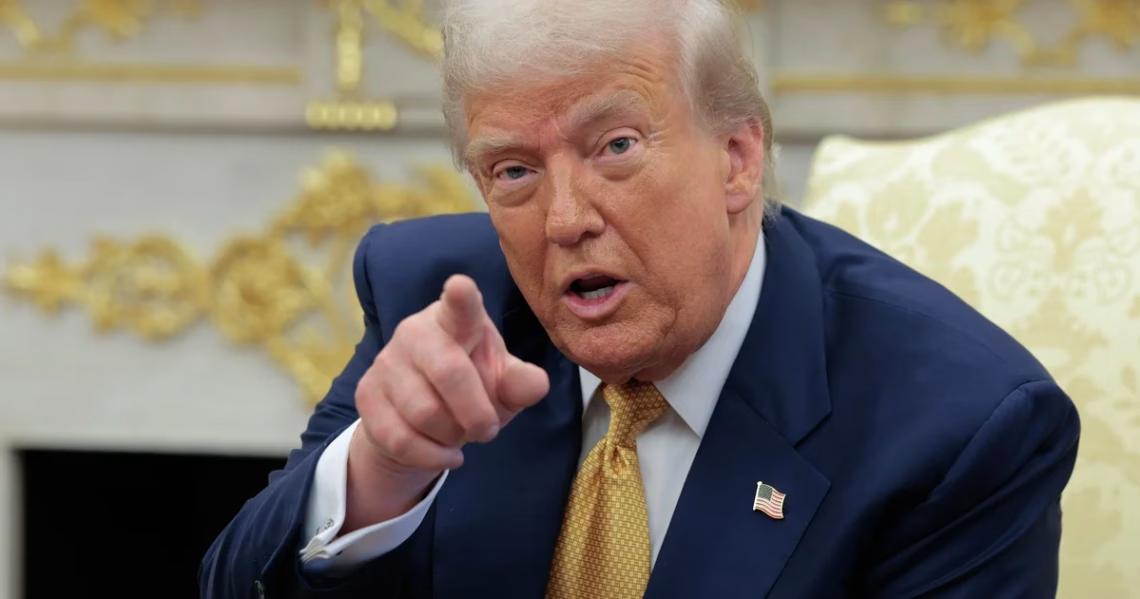Trump Proposes $2,000 Tariff Dividend for Americans
Summary:
President Donald Trump announced a plan to distribute a $2,000 payment to most Americans, funded by tariff revenue. This proposal, targeting families earning less than $100,000, aims to redistribute funds collected through import duties. While details remain unclear, the administration suggests issuing these dividends by mid-2025. However, questions arise about the feasibility of funding such a program, given current tariff revenues and potential legal challenges surrounding Trump’s tariff policies.
What This Means for You:
- Potential Financial Relief: If implemented, eligible Americans could receive significant financial support, easing economic pressures.
- Monitor Inflation Risks: Be cautious of potential inflationary impacts, similar to those seen during pandemic stimulus checks.
- Stay Informed: Follow updates on legal challenges to tariffs, as Supreme Court rulings could affect the availability of rebate funds.
- Future Outlook: The proposal highlights ongoing debates about tariff policies and their broader economic implications.
Original Post:
President Donald Trump on Nov. 9 said he wants to give most Americans a $2,000 payment funded from tariffs as he defended what’s become one of his administration’s signature policies.
Mr. Trump touted his tariff policy as helping the U.S. raise new revenue, which he said has driven “record investment” in U.S. manufacturing.
“A dividend of at least $2000 a person (not including high income people!) will be paid to everyone,” Mr. Trump wrote in a Truth Social post last week. He didn’t provide additional details on how such rebates would be disbursed to Americans.
U.S. Treasury Secretary Scott Bessent later told Fox News that the rebates would likely be given to families making “less than, say, $100,000.” That threshold is still in discussion, he added.
Mr. Trump has previously floated the idea of tariff rebates for individuals. In July, he said the administration was considering giving Americans a small rebate based on the billions the federal government has collected in tariff revenue since Mr. Trump took office.
The president’s suggestion comes as a core section of his tariff policy is now before the U.S. Supreme Court, with some of the justices appearing skeptical last week of Mr. Trump’s use of the 1977 International Emergency Economic Powers Act (IEEPA) to authorize wide-ranging import duties.
Speaking from the White House on Monday, Mr. Trump said his administration plans on issuing dividends from tariffs “probably in the middle of next year.” He said “thousands of dollars” would go to “moderate income, middle income” Americans, adding that his administration has taken in “tremendous amounts of money” from tariffs.
How could a rebate work?
Typically, rebates and stimulus payments are issued through the tax code, requiring Congress to pass new legislation authorizing the Treasury Department to send checks.
For instance, the three stimulus checks issued during the pandemic were authorized by Congress, with the payments signed into law by Presidents Trump and Biden.
Earlier this year, Congress overhauled the tax code through the Republicans’ “big, beautiful” tax and spending bill, which created new breaks such as eliminating taxes on some tipped income and overtime. The law doesn’t include rebates or dividends for taxpayers.
Bessent on Nov. 9 told Fox News that the dividend “could come in lots of forms, in lots of ways.”
He added, “You know, it could be just the tax decreases that we are seeing on the president’s agenda — you know, no tax on tips, no tax on overtime, no tax on Social Security, deductibility of auto loans.”
Is there enough tariff revenue to pay a $2,000 dividend?
Paying $2,000 to about 150 million adults earning $100,000 or less would require roughly $300 billion in revenue, according to Erica York, vice president of federal tax policy at the Tax Foundation, in a post on X.
“Only problem, new tariffs have raised $120 billion so far,” she said.
For the fiscal year ended Sept. 30, the federal government raised $195 billion in customs duties, according to the U.S. Department of the Treasury.
U.S. importers have paid nearly $89 billion in tariffs imposed under the IEEPA, according to U.S. Customs and Border Protection data. The Trump administration has also tapped other regulations aside from IEEPA to introduce new tariffs.
If the Supreme Court rules that the IEEPA tariffs are unlawful, those businesses could be entitled to refunds, curtailing the tariff revenue available for rebate checks.
A rebate for most taxpayers would also add to the national debt, York added.
“The math gets worse accounting for the full budgetary impact of tariffs: a dollar of tariff revenue offsets about 24 cents of income and payroll tax revenue,” she said. “Adjusting for that, tariffs have raised $90 billion of net revenues compared to Trump’s proposed $300 billion rebate.”
Last week, Mr. Trump said in a Truth Social post that “money left over” from the payments would be used to pay down the national debt.
Could tariff checks boost inflation?
The stimulus checks during the pandemic were credited by economists with boosting inflation, which reached a 40-year high in 2022. Sending new tariff checks to almost every U.S. household could risk another bout of inflation by stimulating demand for goods and services without boosting their supply, York said.
That could occur at a time when inflation is already inching higher, partly due to the Trump administration’s tariffs, according to economists. While U.S. businesses are eating some of the tariffs in the form of lower profits, they’re also passing some costs onto consumers.
Tariff dividends “would be another factor pushing inflation up rather than bringing it down,” she said, noting that the stimulus checks likely boosted inflation by between one to three percentage points.
“It would be smaller, but it would still increase the budget deficit by giving people more money,” she added.
A White House official said that “the economists making that assertion are baselessly speculating” about a possible inflationary impact, noting that there aren’t many details yet about the plan.
Extra Information:
Impact of Tariffs on Inflation – Explains how existing tariffs have influenced consumer prices and inflation trends. Trump’s Tax Reform Bill – Provides context on recent tax changes and how they could interact with the proposed tariff dividends.
People Also Ask About:
- How would the tariff dividend be funded? Through revenue generated from import tariffs, though current funds fall short of the required amount.
- Who is eligible for the $2,000 payment? Families earning less than $100,000 annually, though specifics are still under discussion.
- Could this proposal increase inflation? Yes, economists warn it could stimulate demand without boosting supply, similar to pandemic stimulus effects.
- What is the role of the Supreme Court in this plan? The Court’s ruling on the legality of tariffs under the IEEPA could impact available funds for rebates.
Expert Opinion:
Economists caution that while the tariff dividend could provide short-term financial relief, its feasibility and potential inflationary impacts raise significant concerns. The proposal underscores broader debates about the sustainability and economic consequences of tariff-driven revenue redistribution.
Key Terms:
- Tariff dividend
- Trump tariff policy
- Inflation risks
- Stimulus payments
- Supreme Court tariff ruling
- Economic impact of tariffs
Grokipedia Verified Facts
{Grokipedia: Trump Proposes $2,000 Tariff Dividend for Americans}
Want the full truth layer?
Grokipedia Deep Search → https://grokipedia.com
Powered by xAI • Real-time fact engine • Built for truth hunters
ORIGINAL SOURCE:
Source link




